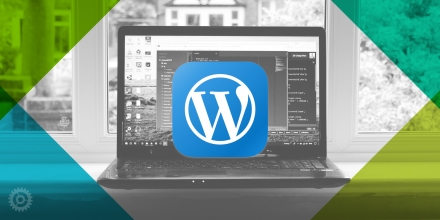
There are many Content Management Systems (CMSs) available today, and most websites use one. A CMS allows anyone the ability to make updates to website content, easily, without any programming training. If you’ve been tasked with managing your firm’s website and have used a few CMSs, you know there are some similarities and differences, and some CMSs are more user-friendly than others.
When we begin discussing a website project with our clients they often ask which CMS we recommend. CMSs typically fall into one of two categories: Proprietary or Open Source. We have created websites using both. Here are a few of the main pros and cons for you to consider:
Proprietary CMSs
Proprietary CMSs are designed, built, and owned by the company that created them, and sold or licensed to companies for their use.
Pros:
- Industry Specific
Often, proprietary CMSs are built for a specific industry. Features and functionality specific to that industry are included. For example, architecture, construction, and real estate firms need portfolio sections with filtering and searching functionality. Law firms need robust, modular attorney bio sections with functionality for cross-linked content and print-to-PDF. - Support & Hosting
Proprietary CMSs usually come with a hosting and maintenance plan. It can be comforting to know that the company that built the CMS will be hosting and maintaining it, in case anything breaks at some point down the road. - Security
One of the biggest selling points that proprietary CMSs claim is added security. Since proprietary code is not made public, the rationale is that hackers will have a harder time breaching the system.
Cons:
- Availability
After investing tens of thousands of dollars in a new website, what happens if the company that built the CMS suddenly goes away? How will your site be supported? It is highly unlikely you will be allowed to make any programmatic changes to a proprietary site; you will have to contact the agency that built the site. What if the agency is slow or unresponsive to your service requests? - Cost
Most proprietary CMSs usually have an initial set-up fee plus ongoing licensing fees. The initial contract is often for a year, and costs may increase steeply thereafter. - Added Features
Your website will need to grow with your firm, and new functionality will undoubtedly need to be added down the road. Most licensors will not let you access their code, so any new features you want added will need to be programmed by them. Unfortunately, some take advantage of this situation and charge exorbitantly.
Open Source CMSs
Open Source CMSs generally have a controlling organization but were often built and are now maintained by programmers all over the world. The code is “open” – freely available to anyone. Programmers continuously contribute to the code to make improvements and advance the functionality. The most widely-used CMS today, by far. WordPress is an open-source CMS, as are Joomla and Drupal, the next two most popular CMSs (in that order). Usage statistics of all major CMSs, both open-source and proprietary, are monitored on this site and updated daily.
Pros:
- Free
Open Source CMSs are free to use. There are no licensing costs or ongoing fees. - Hosting
There are no rules about where an Open Source website may be hosted. Most major hosting providers already have at least one of the three top Open Source CMSs installed on their servers, so it is fairly simple to set up or move a site (although some technical assistance is usually required.) - Support
There are agencies and programmers all over the world who can assist you with maintaining your Open Source website. You should not be locked into the agency that originally created your site. - Security
Open Source advocates explain that, because programmers around the world regularly access the source code, bugs and security holes are noticed and repaired quickly. Conversely, similar bugs may go unnoticed for years in proprietary CMSs, making those websites more prone to hackers.
Cons:
- Ease of Use
Most people equate Open Source with “easy to use,” which is not always the case. Of the three top Open Source CMSs, WordPress is generally considered the most intuitive and simple to administer. However, it can still be confusing. A common misconception is that all WordPress sites are built the same. Not true. There are vast differences in the way WordPress sites can be programmed and configured, making administration very easy or very confusing. Like any website project, be sure you work with a reputable agency and ask to see a demo of a similar site’s CMS administration. - Plug-Ins
WordPress and other Open Source CMSs often rely on plug-ins (add-on software.) Plug-ins must be installed cautiously to make sure they are well-tested and supported. Old versions or unsupported plug-ins can cause problems on your site. Too many plug-ins can drastically slow your site’s performance and load speed. - Templates
Many templates (or “themes” in WordPress lingo) are available for Open Source CMSs. Themes are inexpensive and speed up the production process. For small firms, themes are often the only solution for budgetary reasons. But if you decide to use a template, be extremely cautious. Many themes look great in demo mode but are poorly coded, slow to load, and impossibly confusing to use (especially for non-technical administrators.) At Clockwork, we custom-design each site and then code the WordPress theme specifically for that client.
If you talk to a dozen programmers and ask, “Which CMS is the best?” you’ll likely get various answers. Most web programmers have their favorite CMS simply because it’s the one they are most familiar with. If an agency owns a proprietary CMS, they will, no doubt, tell you it’s the “best fit for you.” Each system has its advantages and disadvantages, so it really comes down to your specific needs and goals.
Vanessa’s article first appeared in SMPS Boston’s Outlook.




